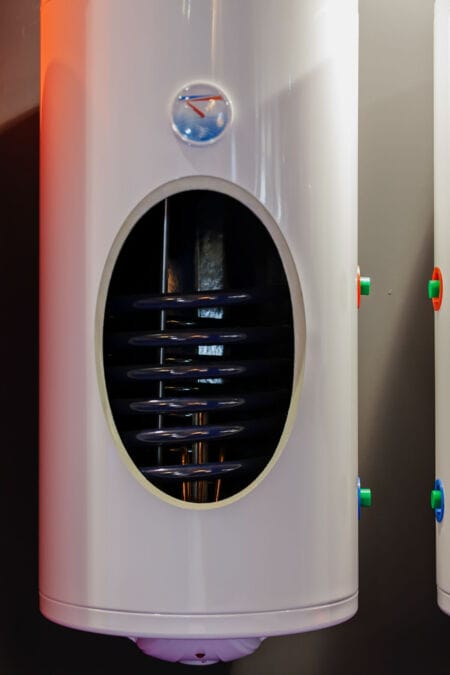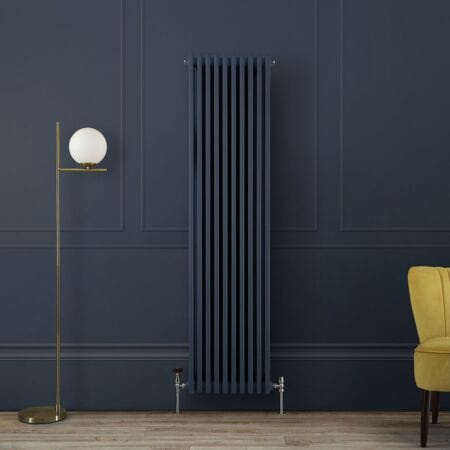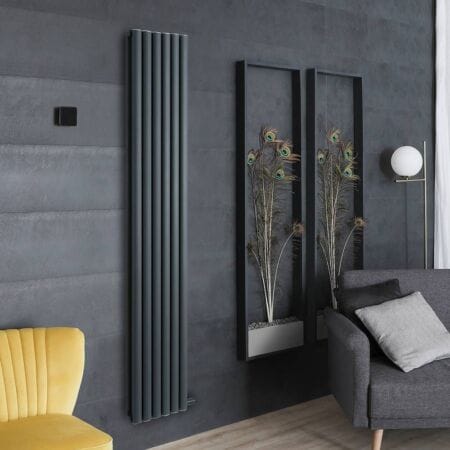Contents
ToggleWhat we'll cover...
The importance of radiator valves, and the best ways to use them for an optimal energy efficient heating performance.
How can valves enhance heating efficiency?
Whilst they might only be miniscule fittings, the updating of radiator valves can spark serious savings, and might just be the smartest move you can make for your home heating system.
When you think of making your home heating more energy efficient, your mind probably jumps to things like smart thermostats, better insulation, or switching to renewable energy sources.
And whilst these full-scale alterations can certainly make a difference, one of the most overlooked energy-saving tools in your home – the humble radiator valve – is tucked quietly away at the base of every radiator, crying out to save you some spends.
It might be small, and it may not be the flashiest piece of heating kit you’ll ever buy, but your radiator valve controls the flow of heat through your system, and that means it facilitates your energy use, your comfort, and ultimately, your heating bill as well.
In this guide, we’re shining a spotlight on radiator valves – how they work, why they matter, and how they can dramatically improve the way your home handles and distributes heat.
What does a radiator valve actually do?
A radiator valve is a radiator component that controls the flow of hot water into the radiator unit from your central heating system. Once the water’s in, the radiator does its thing – transporting heat into your chosen room.
The valve determines:
- When the radiator heats up
- How much hot water it receives
- How much energy is used to keep the room warm
In essence, it works in the same way a tap does – open it, and the radiator gets hot. Close it, and the heat stops flowing. But the type of valve you install can have a dramatic effect on how efficiently all that happens.
Manual radiator valves vs thermostatic radiator valves: What's the difference?
Manual valves
Manual valves are the basic versions. You twist the dial or handle to open or close the flow. They don’t adjust automatically based on room temperature – they’re either on or off, and they rely on you remembering to fiddle with them every now and again.
- Pros: Simple, cheap, classic design
- Cons: Easy to forget, no automatic regulation, not energy efficient
They’re a bit like leaving a light on all day – you only save cash if you remember to turn it off.
Thermostatic radiator valves (TRVs)
Thermostatic radiator valves (TRVs) include a sensor (typically a wax or liquid capsule) that responds to the room’s air temperature levels. When the room reaches the specified temperature set on the valve (usually via a numbered dial), the TRV will automatically reduce or fully halt the flow of hot water for the prevention of overheating and energy waste.
- Pros: Automated temperature control, better comfort, energy saving
- Cons: Slightly more expensive than manual valves, less effective when teamed with radiators positioned behind curtains or furniture
TRVs are a perfect pick for rooms that heat up quicker than others, or spaces you don’t use all the time. They put the control where it matters, right at the source of the heat.
How radiator valves save energy
- They prevent overheating
TRVs prevent rooms from heating up more than necessary. That means you’re not wasting gas or electricity keeping a room at 24°C, for example, when 20°C would do just nicely. Our resource on BTU vs room size can assist you in working out an appropriate heat output level for a specific space, meanwhile.
- They support zonal heating
Each radiator becomes its own zone, with its own temperature target. You can:
- Keep a bedroom cooler than the living room
- Turn the heat down in unused guest rooms that don’t need it
- Allow your bathroom warm up to a comfortable temperature just before your morning routine begins
Essentially, there’s no need to blast heat to every radiator just to warm up a single room, or keep on top of heat retention. TRVs can ensure this doesn’t happen.
- They reduce boiler workload
When a TRV closes, it signals less demand on your heating system. That can lead to:
- Lower usage of fuel
- Longer boiler lifespan
- Quieter, more efficient operation
BestHeating tip: The more rooms with TRVs, the more your heating system can “breathe” – cranking up or toning down based on actual need, as opposed to guesswork.
Smart radiator valves: The future of efficiency
Want to take things to the next level? Smart TRVs provide all the energy-saving benefits of traditional TRVs, as well as digital control, automation, and detailed energy insights.
What you can do with smart TRVs:
- Control each radiator from your phone (or via an alternate smart device or voice assistant)
- Schedule heating per room (ideal for contrasting daily routines)
- Track energy use and spot waste, highlighting obvious areas to reduce usage
- Geofence heating – warm the house when you’re on your way home, so you return to a toasty setting
Real-world example:
You work from your home office Monday to Friday, 9–5. With smart TRVs:
- The office radiator warms up at 8:30am
- The bedroom radiator stays off until the evening
- The lounge kicks in at 5:30pm for your post-work wind-down
No wasted energy. No unnecessary boiler strain. Just heat where you need it, when you need it.
BestHeating tip: Many of our smart heating systems support multi-room scheduling and work seamlessly with our central heating and electric radiators.
Installation: Can you just swap radiator valves over?
In most cases, it is a simple task to swap radiator valves over. Upgrading from manual valves to TRVs – or replacing old TRVs with newer, smarter models – tends to be a relatively straightforward task for a plumber or anyone a tad competent at DIY.
Considerations:
- Type of valve: Straight valves, angled valves, H-block valves or corner valves – make sure you choose the correct configuration for your radiator. Our radiator valve buying guide is your friend if you’re not sure which option best suits your setup.
- Pipe spacing: If your radiator sits close to the wall, check there’s enough clearance room.
- System balance: Following installation, your heating system may need balancing to ensure an even level of heat distribution.
And if you’re going smart? You may also need:
- A compatible hub or app
- Wi-Fi coverage in each room
- Some patience during setup – it will be worth it in the long run!
Maintenance tips for efficient valve operation
Radiator valves don’t need tonnes of maintenance, but they can benefit from a little TLC now and again:
For TRVs:
- Keep them unobstructed – don’t cover with curtains or furniture
- Check for stiffness – turn them once every few weeks to make sure they’re moving freely
- Bleed your radiators on a regular basis to avoid trapped air compromising efficiency
For smart TRVs:
- Check batteries from season to season
- Update firmware if prompted by the app
- Revisit schedules as your routine or room usage might alter seasonally
What's the cost of radiator valves - and is it worth it?
Upgrading your radiator valves isn’t the most glamorous home improvement – but it might be one of the most cost-effective measures to take, especially as it pertains to low cost, high reward.
Average costs:
- Manual valves: £10–£30 per pair
- TRVs: £15–£50 per pair
- Smart TRVs: £50–£80+ each (depending on brand and features)
Potential savings:
- TRVs alone can reduce heating energy use by up to 17% (according to the Energy Saving Trust)
- Smart heating systems with TRVs can cut heating bills by over £100 per year in some homes
Over time, it’s a modest investment that offers the potential to make some serious long-term savings.
See why radiator valves matter with BestHeating
They might be small. They might be understated. But radiator valves are quietly doing the heavy lifting when it comes to controlling your comfort and keeping your energy use in check.
Remember as a basic rule of thumb:
- Manual valves give you basic control.
- TRVs add automated intelligence.
- Smart TRVs offer ultimate convenience and insight.
If you’re serious about home heating efficiency in 2025, a simple means is to start at the valve. It’s one of the simplest upgrades you can make – and one of the most effective. For deeper insights on improving home heating efficiency, take a look at our dedicated ultimate guide to energy efficient heating.
Let us know how radiator valve upgrades make a difference to your home heating setup in the comments below, or through Instagram, Facebook or X.
John is a Research Specialist for the Best Heating Advice Centre, where for over nine years he has dedicated himself to demystifying home heating for our customers. He specialises in creating clear, data-driven guides and how-to articles by collaborating directly with our team of certified heating experts and product engineers.
His work, built on a foundation of journalistic research, has helped millions of readers make confident and informed decisions about their home heating. When he’s not breaking down the heat output differentials from radiators to heated towel rails, John fancies himself as a fine football and music connoisseur.








